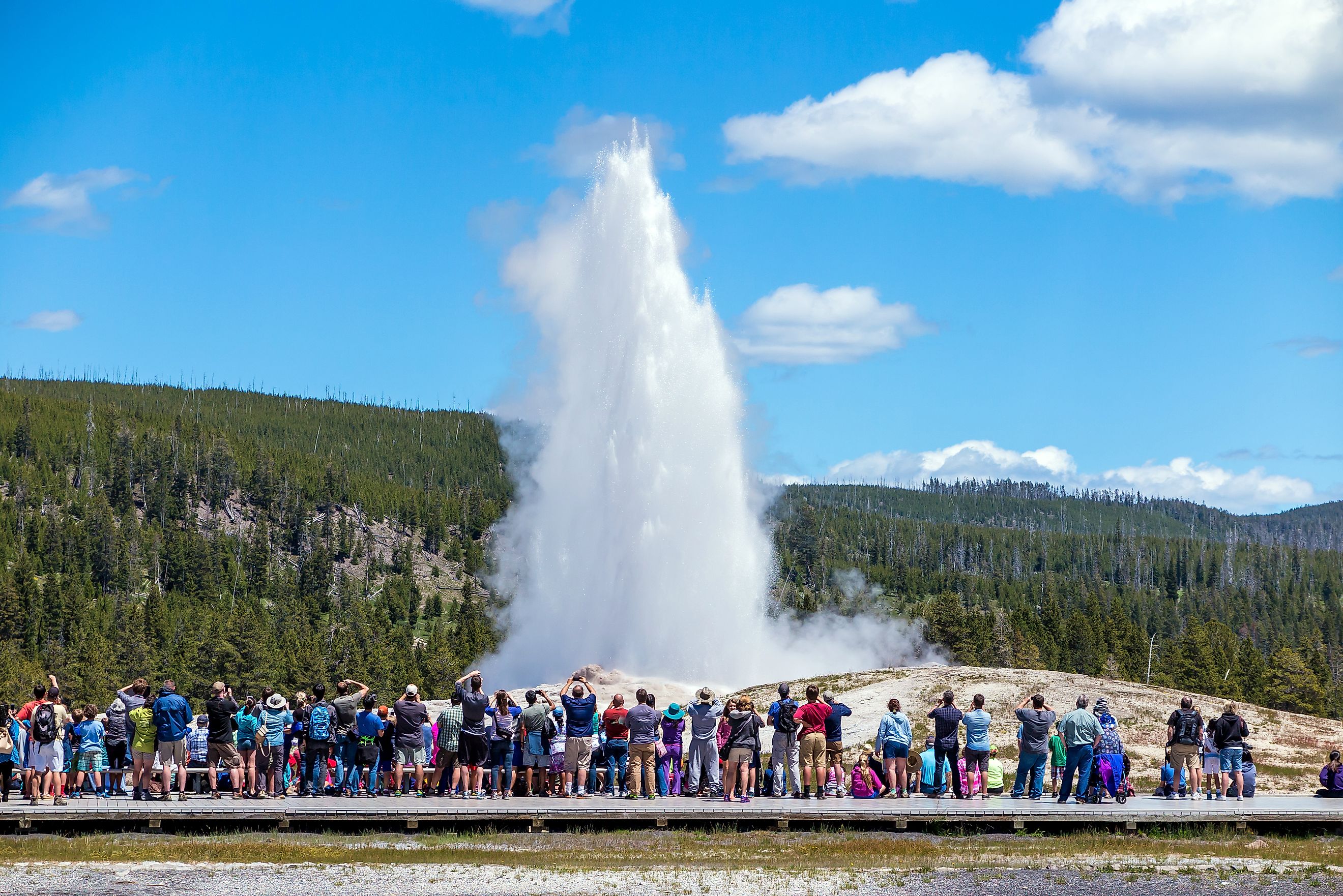
Geyser
A geyser is basically a hot spring that spurts water above the ground. However, it is a unique hot spring because, unlike many other hot springs, geysers erupt periodically—not continuously. The word “geyser” comes from the word “geysir,” a phrase Icelanders used in the 1600s when they were referring to hot springs that were discharging their steam intermittently. The defining feature of a geyser, therefore, is its tendency to discharge water in a non-continuous manner. But that said, a geyser can refer to the vent from which water spurts out—or the spring itself.
How Geysers Are Formed
While the mechanism by which geysers form is not completely understood, geologists have advanced a plausible theory. The earth’s crust, the 25-mile-deep sheet on the outermost layer of the earth and one of the planet’s three layers, is made up of several small, tunnel-like pipes. You may want to view these as fissures or cracks. Some of these tunnel-like holes run quite deep into the crust and down to the hot, heaving presence of molten rock known as magma. When water percolates down through these holes, it gets into contact with molten magma whose blazing temperatures create heat and pressure effects that forcefully eject water thought to lie in a reservoir above the molten rock.
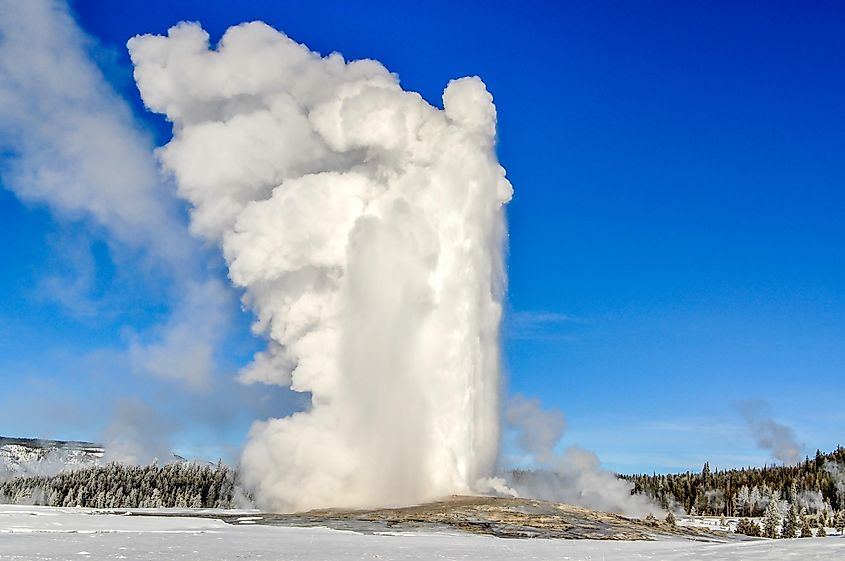
After the water has erupted, it will cool and go back through the same tunnel-like networks to the reservoir and to the molten rock. The effects of heat and pressure will come into play again with the eruption taking place a second time. This process is then replicated in the subsequent rounds. If the geyser is tiny, the eruption process can take minutes. But if the geyser is huge, it can take a day, two days, or even more. Old Faithful, for instance, one of the most famous geysers in the world, has an eruption duration that varies from 44 to 120 minutes. Geyser-like phenomena are known to take place on ocean floors as well as on the moons of certain planets.
The Distribution of Geysers
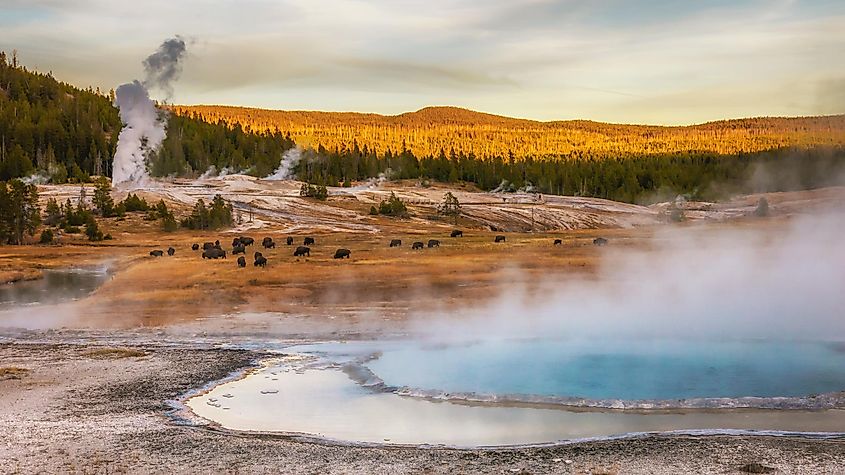
Unlike rivers or lakes, geysers are not that prevalent. According to the United States Geological Survey, there are less than 1,000 glaciers in the world. Remarkably, Yellowstone National Park, the oldest and the most widely known park, is home to about 50% of all the geysers in the world. These include the Old Faithful Glacier which is known to shoot water to a height of up to 144 feet on average. Other than Yellowstone National Park, other huge geyser fields include the Valley of Geysers located on the far eastern side of Russia as well as the El Tatio in Chile. The rest of the geyser-rich regions include Waiotapu on New Zealand’s North Island and of course, Iceland, the country from which the word “geyser” came, and which is known for its characteristic geology.
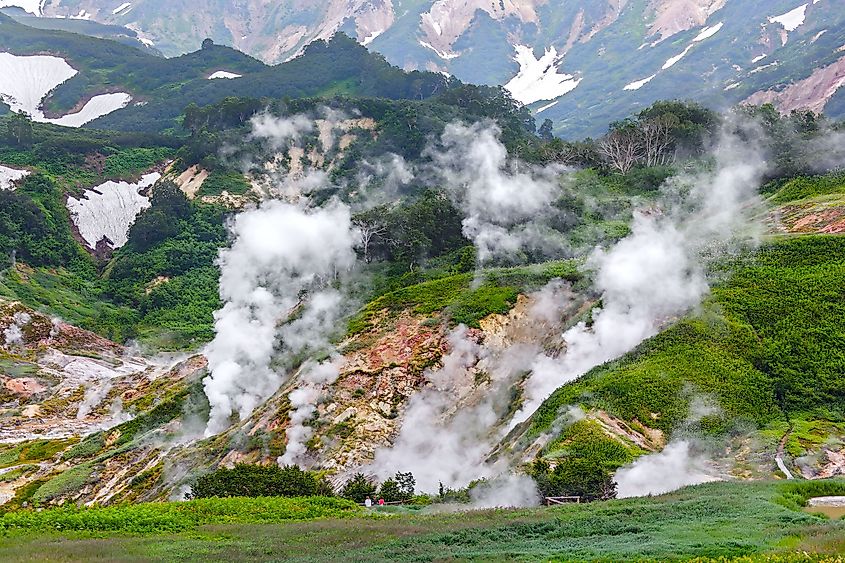
Russia’s Valley of Geysers, located in one of the most picturesque areas in Russia, perhaps even in the whole world, is home to the second-largest collection of geysers on the globe. It is worth noting as well that the distribution of geysers is often affected by the presence (or absence) of volcanic activity. Because of the need for molten magma as a heating agent, areas that have experienced recent volcanic activities are more likely to have more geysers than those that have not. Today, the tallest active geyser in the world is the Steamboat Geyser located in Yellowstone National Park.
Why Are Geysers Important?
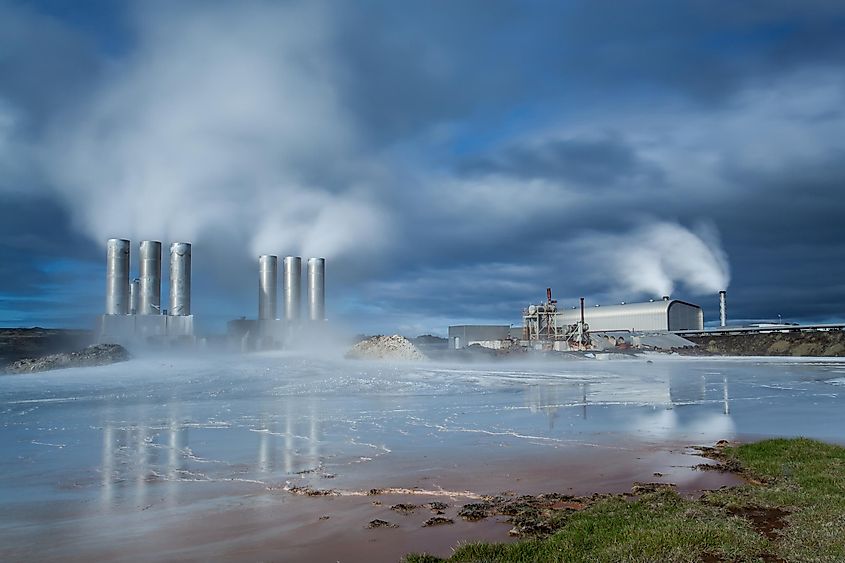
Geysers can be crucial sources of heat and electricity. One country that has harnessed the heat potential of geysers is Iceland. Long a world leader in clean energy, Iceland relies on geothermal water to heat around 90% of homes in the country. Iceland’s power plants drill wells into the ground, harvest the steam and channel it to turbines that then turn electricity-producing generators.
Then again, the heat generated from geothermal sources does not just warm homes or offices. Instead, after warming homes and offices, the hot water is transferred into small pipes that lie beneath the sidewalks. The heat in the pipes will melt the layers of ice or snow that often cover the sidewalks, especially in winter. Besides, geysers are tourist attraction spectacles with huge economic potential.
The Takeaway
Geysers are hot springs whose eruptions are non-continuous. They are formed when subterranean water percolates and gets in contact with molten magma which heats the water and causes it to spurt out at periodic intervals. Predictably, geyser distribution depends on the distribution of recently active volcanoes. As for uses, geysers can be harnessed into geothermal energy and used to warm homes and offices, as well as clear streets of ice or snow. Besides, geysers are tourist attractions with immense economic potential.











